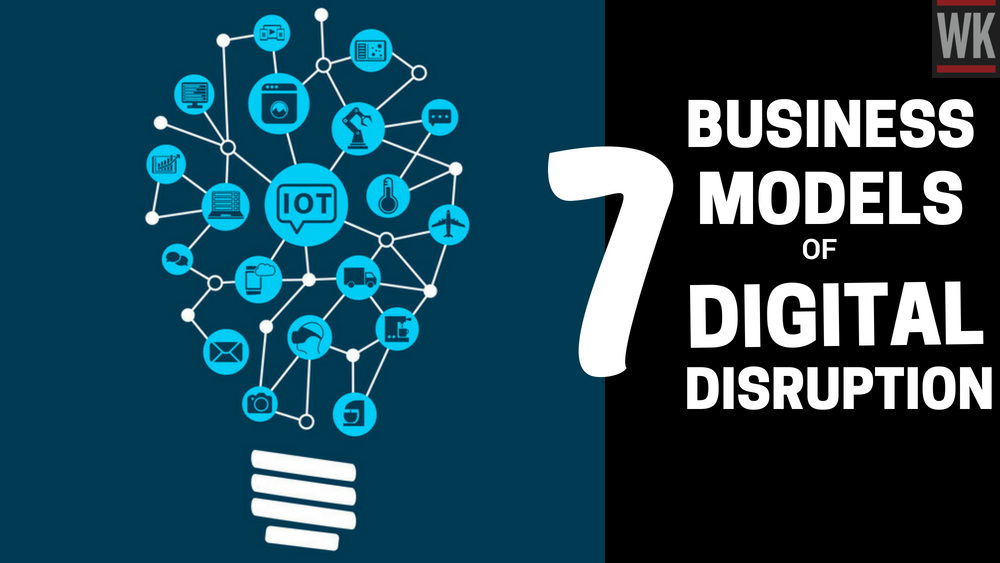The biggest question you are going to be asking as a CEO is…
“How can I design a digital business model?”
It’s true that businesses who are more methodical in their adoption of a “digital transformation” will increase revenue, profitability and market capitalisation.
Moving into 2018, 75% of CEO’s of global 2000 companies have digital transformation as the centre focus of their corporate strategy.
Having that shift in your business means that you are giving yourself, and your employees the chance to access better data, and better ways to process this data because the technology you are using are more advanced, and up-to-date.
With having better data, comes better selling and marketing techniques and democratises the access to information, and decision making, meaning from a sales and marketing point of view, you can be more productive.
Over the last 10 years, I have gone through the highs and lows of running businesses and because of this, I have understood what that digital shift looks like for a CEO, and how this can be applied to your existing business model.
To give you a better understanding of what this looks like, here are my 7 business models of digital disruption and examples of brands who have embraced the revolution.
1.The Experience Model
This is all about giving your consumers a unique experience that they are willing to pay good money for. Think about Tesla. Elon Musk has created a unique product with Tesla and because of how innovative, and how experience-driven it is, the company and its CEO are both benefiting from the success of not only the experience they offer, but how digitally-disruptive Tesla is.
2.The Subscription Model
Before the internet became so inclusive in our day-to-day lives, the subscription model was not as prevalent as it is now.
The subscription model works by bringing a customer into the business based on a monthly payment, giving them continued access to a specific product/service. Take Netflix as an example. They have over 100 million users paying a small monthly subscription fee for access to thousands of films and tv shows.
3.The “Free” Model
The free model has been adopted by the likes of Facebook, Instagram, Google and Twitter. The ideology behind the free model is that you, as the user become the product because you are not paying for this. This means that your data becomes the most valuable part of the business, as does your attention for advertising purposes.
4.Access-Over-Ownership Model
This business model is all about a “sharing” philosophy. You pay to use the product/service, but it does not become yours to own; you are only accessing it. This is one of the most disruptive business models as it gives the same experience as purchasing something, but without having the ownership implications.
Those who are doing this well would include Zipcar and AirBnB.
5.Ecosystem Model
Thanks to the likes of Google and Apple, the Ecosystem model is more disruptive than ever before. This business model is a success because of the way it sells an interdependent suite of products/services that when purchased, increase in value based on how many you own.
This does create consumer dependency but this is what makes Apple users stay with Apple (myself included).
6.On-Demand Model
As important as on-demand content is, having an on-demand business model serves as an even more vital part of embracing a digital transformation. This works by having users pay for a service that they don’t have time to do for themselves, but is fulfilled by people with time, and short on money.
For example, Uber and Lyft have made the on-demand model a huge success.
7. Freemium Model
The freemium model is one of the most popular business models online. This is where users get either a “basic” (free) version of a product/service, or a “free” trial. This user will then have the option to upgrade to a paid version of said product/service.
LinkedIn do this well for their upgraded version, as does Dropbox, Hootsuite and hundreds of other companies.
Now that you, as a CEO can see my 7 business models of digital disruption, it is imperative to also understand changes that are currently happening so that you can be ahead-of-the-curve.
#1: Outcome-based models:
understanding how profitable each customer is, and developing a business model to facilitate individuality.
#2: Expansion-based models:
taking your business and expanding into new industries and markets.
#3: Digital-first models:
taking the way products and services are designed, and delivered and taking the digital approach to serve more customers online.
It is important to see new opportunities now, and understand how a digital transformation experts can help you utilise new opportunities and digitalise the customer-centric strategy as a CEO.
Original article by Paul Marsden from Digital Intelligence Today, who I had the pleasure of meeting for brunch in London a few years ago talks about there being 10 Business Models of Digital Disruption (and how to respond to them).

